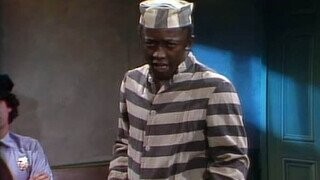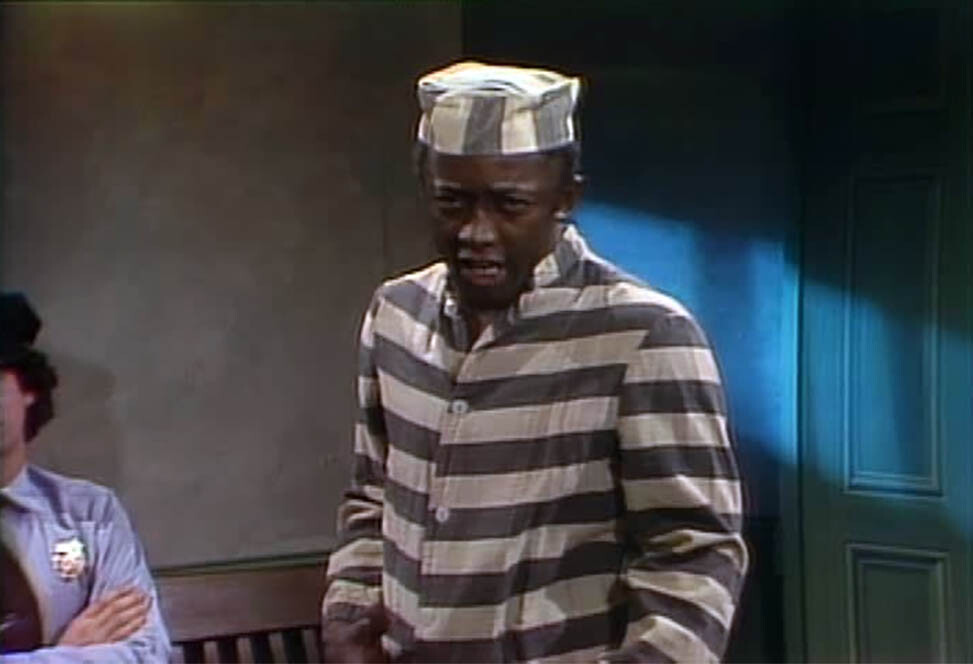It Ain't Easy Being Garrett Morris

Welcome to ComedyNerd, Cracked's daily comedy superstore. For more ComedyNerd content, and a loud recap of the Iran/Contra Affair for the hard of hearing, please sign up for the ComedyNerd newsletter below.
The first seasons of Saturday Night Live feature big names we all remember. Bill Murray, John Belushi, Dan Aykroyd, Gilda Radner, Chevy Chase (OK, we remember Chevy but we don’t have to like him). Most of them went on to movie stardom, celebrity rehab, or both. But there’s one name we hear about much less: Garrett Morris.
Which is strange. Garrett Morris was the first Black performer on Saturday Night Live, paving the way for Black actors in televised sketch comedy. Without Garrett Morris, is there an Eddie Murphy? How about Tracy Morgan or Kenan Thompson? Morris laid the groundwork for Key & Peele and the ladies on A Black Lady Sketch Show.
One would think he would be a greater presence in the pantheon of beloved SNL performers. One would think we’d celebrate him every Black History Month. Or that he would constantly be welcomed back to the SNL stage alongside all the other legendary living alums of this show. But he is often forgotten or sidelined.
The sad truth? Garrett Morris’s time on the historic comedy show isn’t remembered as a precious moment in comedic history. Rather, it is a bitter time capsule filled with disrespect, heavy drug use, and racism.
Live from New York
There was a lot of turmoil for Morris to get onto that Studio 8H stage in the first place.
He came to the show a trained theater actor, not an improv Second City guy like Belushi or Aykroyd. While he did have an improvisational background, it looked a lot different than his castmates’ experiences in Chicago and Toronto.
“I learned improv with Imamu Amiri Baraka, not at Second City. And the workshops were more about talking about problems in the ghetto — the aim wasn’t necessarily comedy,” Morris confessed to Maya Rudolph in the Hollywood Reporter. “So, when John Belushi and Gilda Radner got into Saturday Night Live, they had a comedy range from one to a hundred. My range was from “Hate Whitey” to “Kill Whitey.”
Though he was light on improv training, Morris arrived at SNL with some serious chops in his toolbelt. Morris began his journey in show business as a playwright; in fact, he exclusively thought of himself as one. “Mind you, I had two plays that had been produced in New York City,” Morris remembers. “In fact, New York commissioned a play from your boy, okay, and then I wrote another play, which was produced in New York and in L.A.”
With his theater work proving successful, it was a leap of faith for Morris to even take the TV job. But despite his reservations, he entered the Saturday Night Live fray as a writer. That position seems like a natural fit given his background but trying to transition from plays to sketch proved to be a challenge for Morris. “I’m a playwright, so I was having trouble getting my stuff down to a minute or a minute and a half, to fit into some sketch.”
In addition to the writing challenges, Morris was met with America’s pastime: racism. “I was a little disappointed in Michael O’Donoghue,” Morris remembers. “Because he was associated with National Lampoon, I made some progressive assumptions I shouldn’t have made. He was a racist motherfucker. I suggested I could play in this skit, a doctor. He had the nerve to tell me, ‘Garrett, people would be thrown by a Black doctor.’ … So once or twice, he and I did some stuff together, but I always knew what he really was.”

NBC
Being the only Black person in the room is never easy. Often, the solo Black person in question will think the racist comment or moment was in their head, or even that they made it up. Fortunately for Morris (or unfortunately, depending on how you see it), he knew his perception of racist behavior wasn’t simply one man’s opinion. Other cast members noticed what was going on.
“Garrett was treated horribly, horribly— by the writers, by some of the performers, and Lorne,” notes OG cast member Jane Curtin. “They just dismissed him... I found it amazing that he let it go on for as long as it did, but it took its toll, it clearly took its toll on Garrett.”
So the problem wasn’t just making the transition from theater to TV. It was personal. Morris was not liked by his fellow writers. His sketches were not getting put on the air, not being taken seriously, and even worse, they were stolen.
“The first three months or so, a guy there stole an idea and then added a little something to it, and he didn’t even give me credit for co-writing,” Morris remembers about one particularly egregious example of joke theft. “This guy stole from me and then told Lorne I couldn’t write.”
There was a silent coup underway, led by white writers, to oust Garrett Morris from the writer’s room. What was head honcho Lorne Michaels’ response? Put Garrett Morris in the cast! You can’t say Lorne didn’t get creative.
“When the challenge came to get rid of me as a writer, Lorne let me audition for the Not Ready for Prime Time Players,” Morris remembers. “He did not fire me. And to this day, I am thankful for that.”
Not Ready for Prime Time
Problem solved? More like a problem traded in for new worries.
As a full-time Not Ready for Primetime Player, things seemed to only get harder for Garrett Morris. The SNL writing staff wasn’t done with Morris yet, writing some pretty horrendous characters that leaned heavily into racist “caricatures.”

NBC
One horrible sketch required Morris to play a Flying Monkey, a part that earned Morris criticism from Black audience members. However, Morris was and is not easily shaken. He’s a trained theater actor who is down to do the work no matter what others think.
“I got so many years of Uncle Tom letters, especially when I did the monkey in The Wiz,” Morris says. “Nobody tells me how to think, not even Black people. Now the same people who criticized me for doing the monkey in The Wiz are doing donkeys in Shrek and making millions of dollars.”
As an artist, Morris was interested in pushing the envelope with his comedy--an effort that likely would have been received better in the theater world. But perhaps late-night variety shows in the 1970s didn’t share the same levels of adventurousness, at least in the areas Morris wanted to explore.
Sadly, Morris’s singular voice did little favors for him when it came time to try bonding with his fellow castmates. But given his taste for alone time, maybe that was for the best.
“I was a loner. And that actually cost me. Because with Saturday Night Live, I learned that the social life is just as important as your own talent. Particularly with writers, they have to hear you talk and get to know you.”
Despite the obstacles in his way, Garrett Morris kept working to make an impact, managing to create some memorable characters and moments for SNL. The Hollywood Reporter lauded Morris for breakthrough characters like the Dominican Mets player Chico Esquela (“Baseball been berry, berry good to me!” was his catchphrase) and a “Weekend Update” segment “News for the Hard of Hearing.”

NBC
Building a Chair
Post SNL, Garrett Morris continued to work despite a drug habit that was common among his fellow cast members. “I’ve been described as being the worst person in the world in terms of drugs. Now we know that that turned out not to be so. My attitude toward drugs has been indifferent. I’m not saying that excuses it.”
He eventually got clean, finding work in a number of projects including playing the boss on Martin. Even then, life was hard -- during the run of that show, he was shot by a robber in broad daylight. He ended up in the hospital for months, and he even “was in a wheelchair for about a year."
So it’s never been easy to be Garrett Morris. But he’s a fighter who never shied away from hardships or difficult relationships. When we celebrate Saturday Night Live names like Murray, Radner, or Chase (OK, we probably aren’t celebrating Chevy), maybe we should add Morris to that list. The guy is a legend who paid his dues just like everyone else.
“I had five years of building what everybody knows is a chair there, the only nonwhite chair in that whole thing, and I shed the blood for that,” says Morris. “So at least if people don’t want to say something good, they should not say anything at all, because I’ve done nothing to deserve anybody to come after me saying a lot of bullsh*t.”
Maybe we should have Morris yell that really loud, Weekend Update-style, for the people in the back.
For more ComedyNerd, be sure to check out:
The Onion': 5 Behind-The-Scenes Stories From America's Finest News Source
Comedy Impressions That Changed Politics
Chevy Chase: A History Of Being Terrible
Top image: NBC
